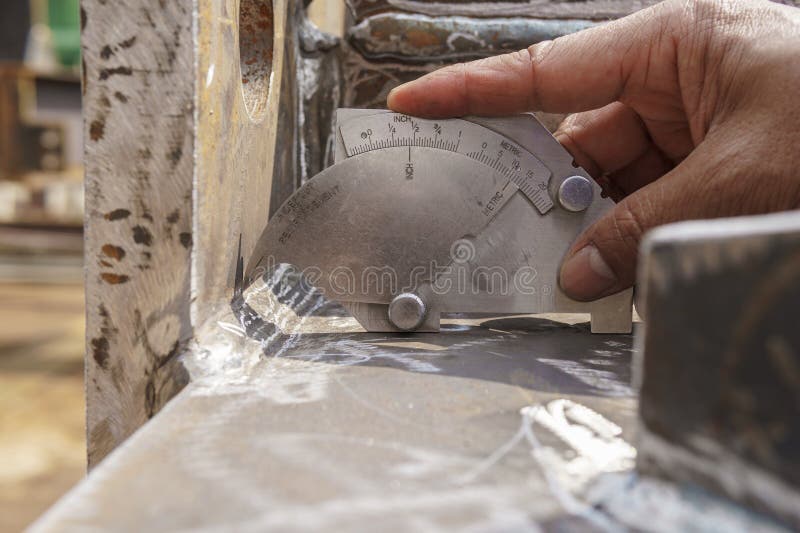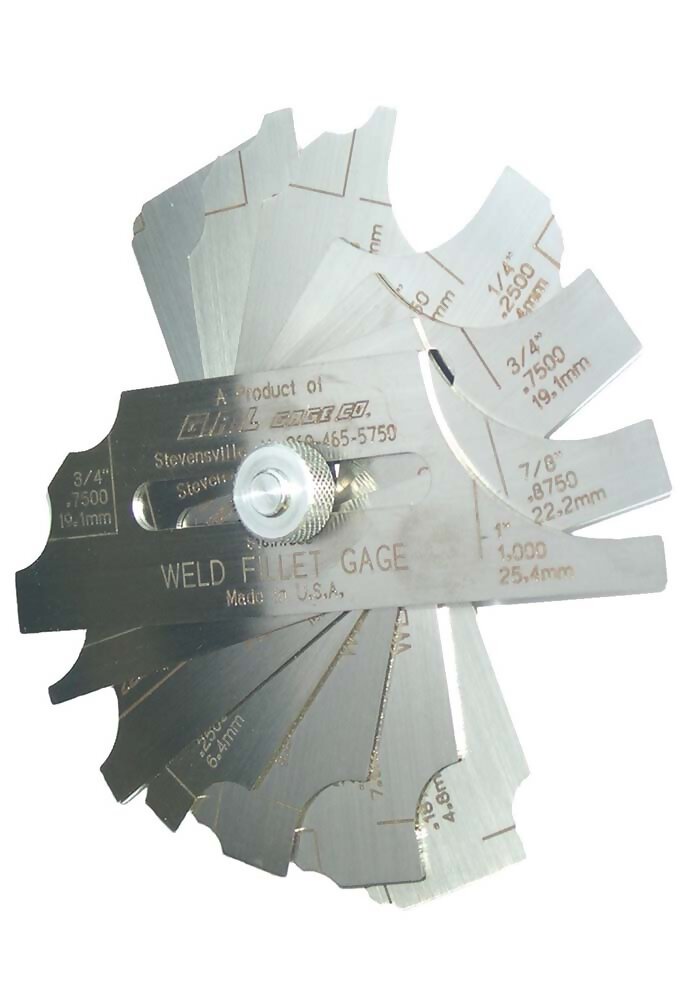Innovative Devices and Techniques for Accurate Gauge Fillet Weld Measurements
The Ultimate Guide to Fillet Weld Quality Assurance: Guaranteeing Toughness and Resilience in Your Welded Joints
In the world of welding, making certain the strength and resilience of fillet welds is critical for the stability of bonded joints. As we get started on this expedition of fillet weld top quality control, we will certainly reveal essential factors that affect weld strength, dig right into reliable examination approaches, and review approaches for protecting against usual weld issues.
Relevance of Fillet Weld Top Quality Control
Making sure appropriate fillet weld high quality control is critical in assuring the structural stability and long life of welded elements in different industries. Fillet welds are commonly made use of in architectural steelwork, bridges, pressure vessels, pipelines, and various other essential infrastructure where the stamina of the weld is vital to total safety and security and performance. Quality assurance procedures such as visual inspections, non-destructive screening, and adherence to welding procedures help recognize prospective problems like absence of combination, incomplete infiltration, damaging, or excessive support.
Key Variables Impacting Weld Toughness
Attaining ideal weld toughness needs careful factor to consider of different key variables that influence the honesty and toughness of the welded joint. The initial important factor is correct joint preparation, which entails cleaning the base steels to remove any contaminants that could weaken the weld. Furthermore, the fit-up of the joint is important to guarantee proper infiltration and blend of the filler product.
The choice of the suitable welding technique and criteria additionally plays a considerable function in determining weld strength. Aspects such as heat input, travel rate, and electrode angle can impact the high quality of the weld. Preserving the correct interpass temperature level during multi-pass welding is vital to protect against cracking and guarantee a solid bond in between the layers.
Furthermore, the option of filler product and its compatibility with the base steels is crucial for achieving high weld stamina. Utilizing filler product with the ideal mechanical homes can improve the total honesty of the weld. Post-weld warm therapy and correct examination strategies are important actions in ensuring the stamina and resilience of the welded joint.
Evaluation Methods for Weld Integrity

Another crucial assessment method is fluid penetrant testing, where a fluid color is applied to the weld surface area - Gauge Fillet Weld. The dye seeps right into any surface-breaking issues, making them visible under UV light. This approach works for detecting imperfections that may not be noticeable to the nude eye


Ultrasonic screening is additionally extensively made use of for evaluating weld honesty. High-frequency acoustic wave are routed right into the weld, and any type of disruptions in the acoustic wave pattern indicate prospective defects like fractures or absence of combination.
These assessment approaches play an essential role in making sure the top quality and reliability of welds, ultimately adding to the total toughness and durability of welded joints in industrial settings.
Stopping Usual Weld Defects
In order to maintain the structural stability of welded joints in commercial applications, it is vital to apply safety nets to deal visit here with typical weld flaws. One typical flaw is absence of blend, where the filler product falls short to bond adequately with the base metals, leading to vulnerable points in the weld. This can be avoided by guaranteeing appropriate heat control and using the appropriate welding method.
Another frequent issue is porosity, triggered by gas entrapment in the weld metal throughout the welding procedure. To avoid this, it is vital to cleanse the base steels completely, utilize dry electrodes, and maintain a suitable welding environment with appropriate air flow.
Furthermore, fractures in welds can compromise the joint's strength. To prevent this issue, it is vital to manage the cooling rate after welding, make use of pre-heating when needed, and choose appropriate welding criteria.
Enhancing Bonded Toughness With Appropriate Techniques
To strengthen the long life and dependability of welded frameworks, utilizing advanced welding strategies is critical. One vital technique to enhance weld longevity is to make sure appropriate weld grain positioning. By positioning the weld grain accurately within the joint, the weld's toughness and resistance to tiredness can be considerably boosted. Furthermore, utilizing the right welding parameters, such as voltage, existing, and travel rate, is vital for achieving a long lasting weld. These parameters straight impact the weld's infiltration, blend, and overall top quality, adding to its long life.
Selecting the ideal filler steel and making sure the sanitation of the base steels can protect against inclusions and other defects that could compromise the weld's durability. By implementing these proper techniques, welders can ensure that their welded joints display extraordinary stamina and toughness, satisfying the greatest high quality requirements.
Conclusion
In conclusion, maintaining top quality control criteria for fillet welds is critical for making certain the toughness and toughness of welded joints. By comprehending the key factors influencing weld toughness, using evaluation methods for weld honesty, protecting against typical weld problems, and using correct methods, welders can enhance the total toughness of their welds. It is see here now necessary to prioritize quality control actions to create reputable and long-lasting welded joints.
In the world of welding, making sure the strength and longevity of fillet welds is vital for the integrity of bonded joints. As we begin on this expedition of fillet weld high quality control, we will discover important variables that influence weld toughness, dig right into efficient inspection techniques, and discuss methods for avoiding typical weld issues.Achieving optimum weld strength calls for cautious factor to consider of various crucial factors that affect the honesty and sturdiness of the bonded joint (Gauge Fillet Weld).In conclusion, keeping high quality control requirements for fillet welds is critical for guaranteeing the toughness and resilience of bonded joints. By recognizing the essential aspects influencing weld strength, using examination methods for weld integrity, click to find out more stopping usual weld issues, and employing appropriate strategies, welders can enhance the overall toughness of their welds